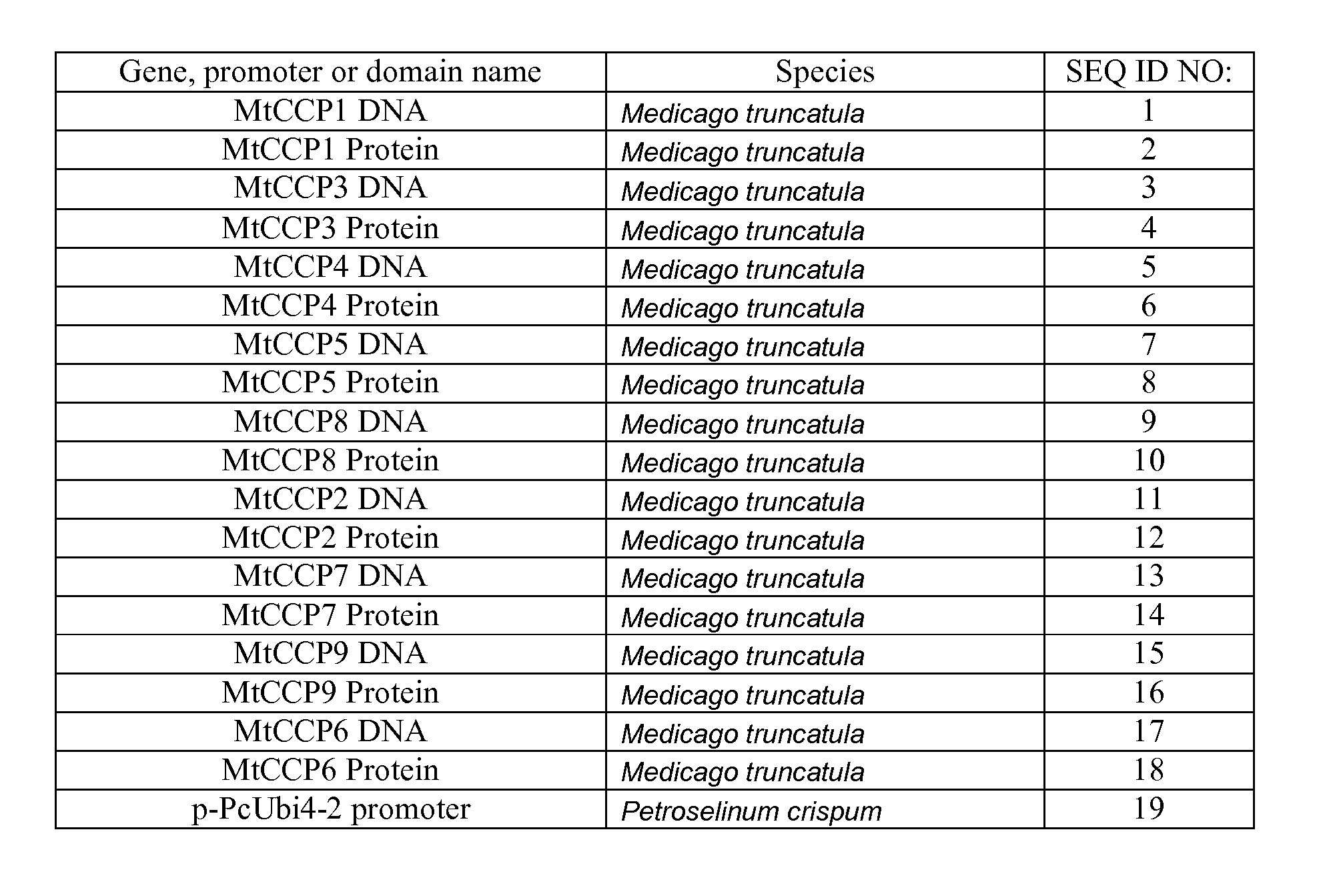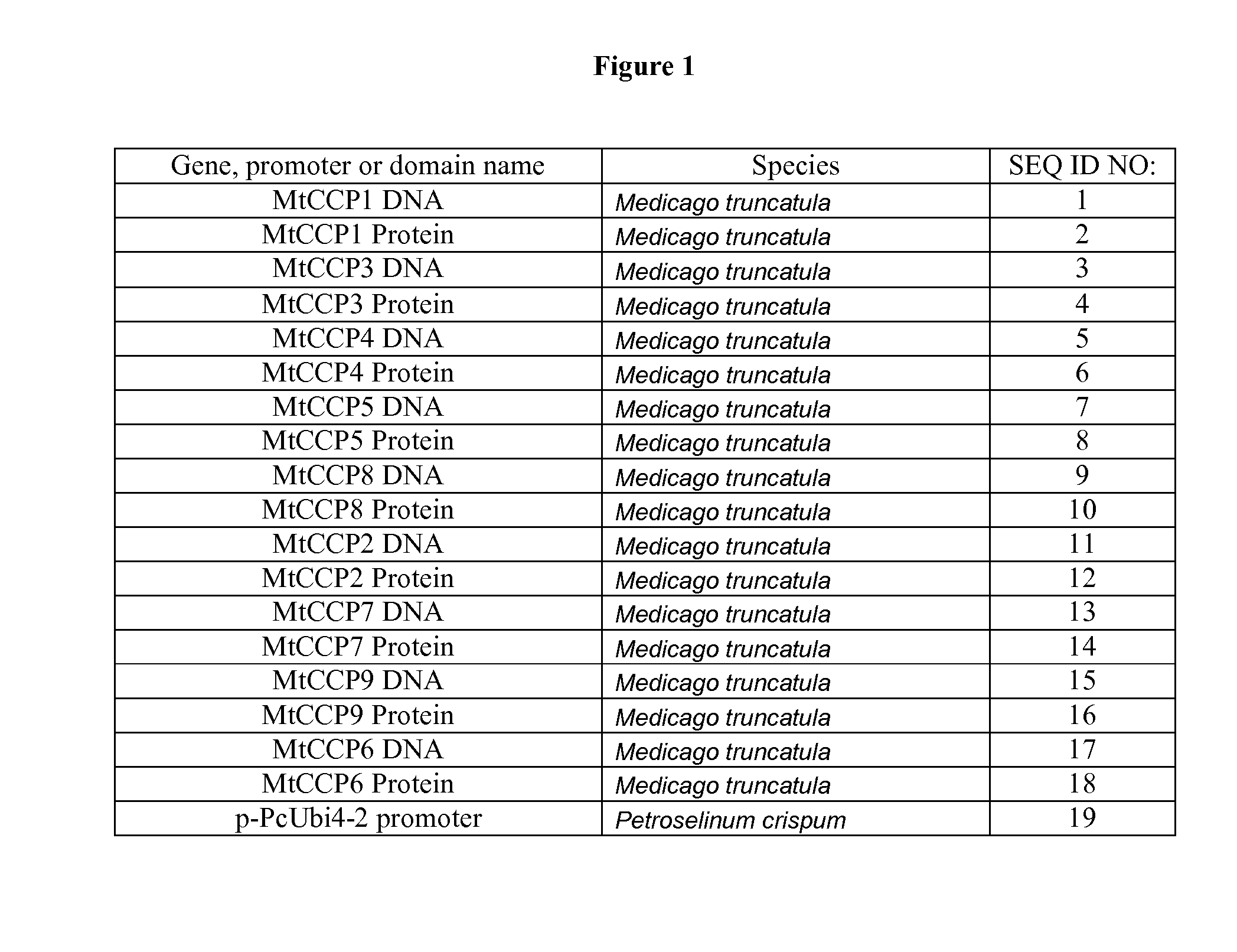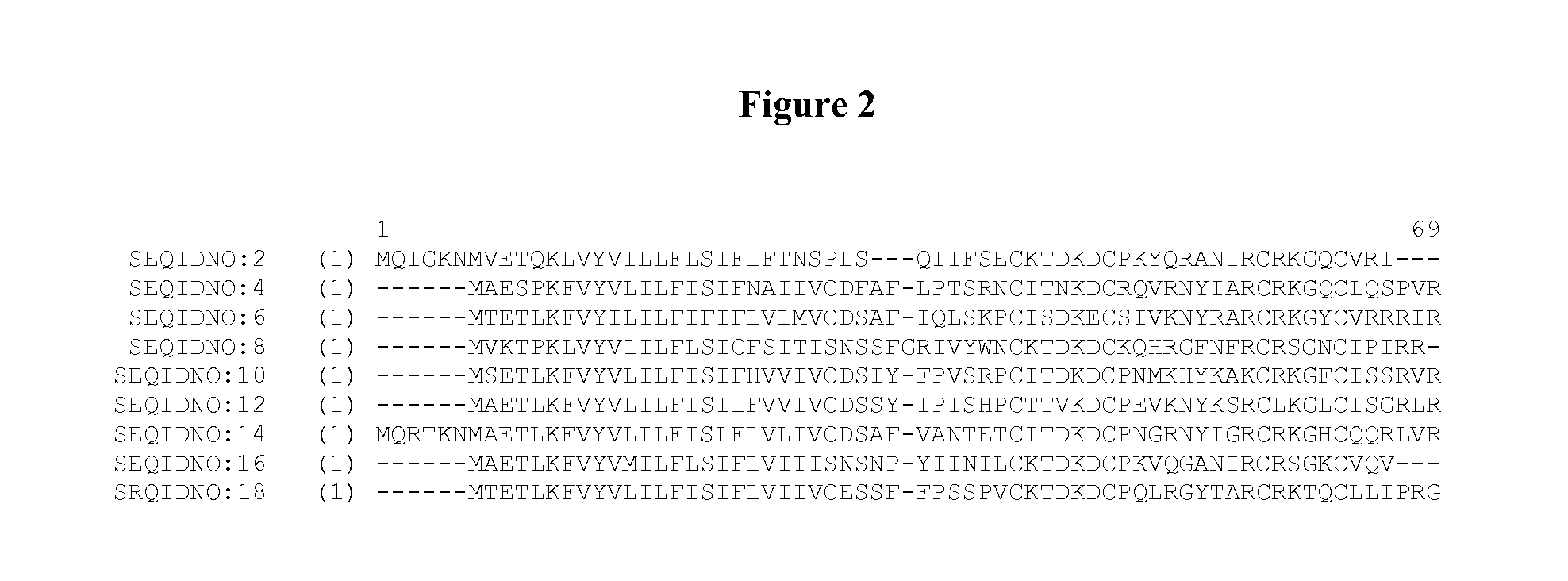Nematode-Resistant Transgenic Plants
a transgenic plant, nematode technology, applied in the direction of bryophytes, biochemistry apparatus and processes, peptide sources, etc., can solve the problems of increasing the cost of soybean production, and reducing the economic benefits of soybean production, so as to overcome the nematode infestation of valuable agricultural crops or alleviate the
- Summary
- Abstract
- Description
- Claims
- Application Information
AI Technical Summary
Benefits of technology
Problems solved by technology
Method used
Image
Examples
example 2
[0065]A bioassay to assess nematode resistance conferred by the polynucleotides described herein was performed using a rooted plant assay system disclosed in commonly owned copending USSN 12 / 001,234. Transgenic roots are generated after transformation with the binary vectors described in Example 1. Multiple transgenic root lines are sub-cultured and inoculated with surface-decontaminated race 3 SCN second stage juveniles (J2) at the level of about 500 J2 / well. Four weeks after nematode inoculation, the cyst number in each well is counted. For each transformation construct, the number of cysts per line is calculated to determine the average cyst count and standard error for the construct. The cyst count values for each transformation construct is compared to the cyst count values of an empty vector control tested in parallel to determine if the construct tested results in a reduction in cyst count. Two independent, biologically replicated experiments were run for each express...
PUM
| Property | Measurement | Unit |
|---|---|---|
| nematode resistance | aaaaa | aaaaa |
| concentrations | aaaaa | aaaaa |
| temperature | aaaaa | aaaaa |
Abstract
Description
Claims
Application Information
 Login to View More
Login to View More - R&D
- Intellectual Property
- Life Sciences
- Materials
- Tech Scout
- Unparalleled Data Quality
- Higher Quality Content
- 60% Fewer Hallucinations
Browse by: Latest US Patents, China's latest patents, Technical Efficacy Thesaurus, Application Domain, Technology Topic, Popular Technical Reports.
© 2025 PatSnap. All rights reserved.Legal|Privacy policy|Modern Slavery Act Transparency Statement|Sitemap|About US| Contact US: help@patsnap.com



